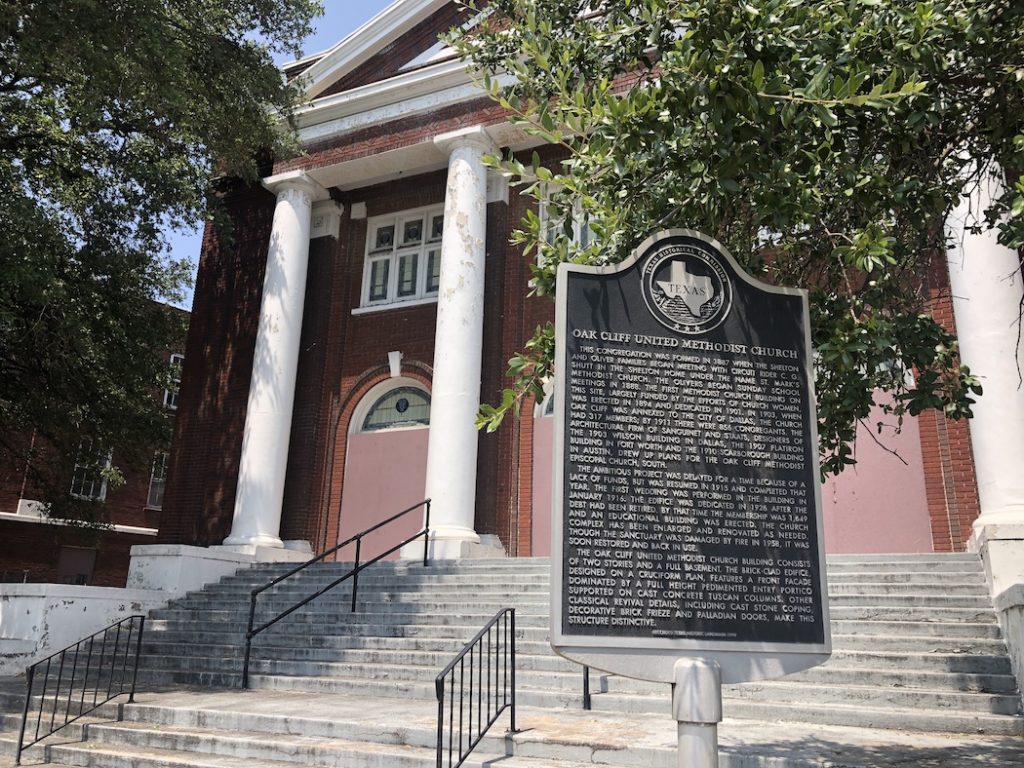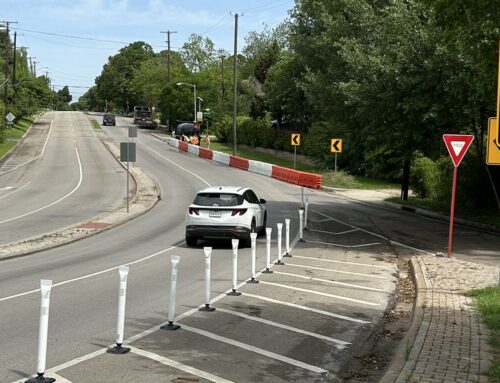The City of Dallas Office of Historic Preservation will present a rare case next week to determine whether an Oak Cliff historic landmark property is falling into “demolition-by-neglect.”
The Dallas Landmark Commission could decide after a hearing on Monday whether the property is in bad enough shape to trigger notices to the owner and present a timeframe for repairs.
The 107-year-old Oak Cliff United Methodist Church is part of Oak Cliff’s original central business district, of which few remnants are left. It has been vacant since 2015, and the Nayeb Group purchased it in January 2020. Phone calls to the real estate company were not answered Thursday.
Preservation Dallas requested the city investigate whether the property is in violation of city rules meant to prevent owners of historic landmarks from allowing them to fall into disrepair.
A video blogger recently posted footage from inside the church on East Jefferson at South Marsalis that showed a roof leak and vandalism.
Advancing demolition-by-neglect cases has not been the common practice for the Office of Historic Preservation, says Director Murray Miller, although there was a case six months ago.
The Dallas Development Code defines demolition-by-neglect thusly:
“Demolition by neglect is neglect in the maintenance of any structure on property subject to … a historic overlay district that results in deterioration of the structure and threatens the preservation of the structure.”
Historic landmarks and buildings in historic districts “must be preserved against deterioration and kept free from structural defects.”
Here are all the ways in which a property could be in violation of the code:






